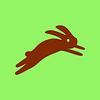You need to sign in or sign up before continuing.
Take a photo of a barcode or cover
adventurous
informative
relaxing
informative
lighthearted
fast-paced
What an eccentric hobby - my exact first thought. Living in a country with basically no tides, mudlarking opened up a whole new world for me. And it's super interesting that every niche activity has it's own elites and secret societies. If you listen to it as an audiobook, I recommend going through the author's Instagram account - it has all the finds discussed.
My favourite thing about Mudlarking is that the author is interested in the mundane and is responsible about how invasive she is. I loved the lesson on old fizzy drink bottles, the Cobden-Sanderson type, conserving leather, prison camps for those bound for Australia and many more.
It will probably be even more amazing for someone who can actually imagine the Thames as she moves along it's banks.
Oh, and a mudlark "is someone who scavenges in river mud for items of value, a term used especially to describe those who scavenged this way in London during the late 18th and 19th centuries."
My favourite thing about Mudlarking is that the author is interested in the mundane and is responsible about how invasive she is. I loved the lesson on old fizzy drink bottles, the Cobden-Sanderson type, conserving leather, prison camps for those bound for Australia and many more.
It will probably be even more amazing for someone who can actually imagine the Thames as she moves along it's banks.
Oh, and a mudlark "is someone who scavenges in river mud for items of value, a term used especially to describe those who scavenged this way in London during the late 18th and 19th centuries."
adventurous
informative
inspiring
mysterious
reflective
medium-paced
Endlessly fascinating and engagingly written! A remarkable history of the Thames river and the people of London and its environs, both present and for several centuries past. I loved this book, and would enjoy mudlarking myself.
pulling a welly boot out of the Thames with a delicious slurp. this book was a delight and I am desperate to go mudlarking now.
Lara Maiklem has scoured the banks of the Thames for over fifteen years, in pursuit of the objects that the river unearths: from Neolithic flints to Roman hair pins, medieval buckles to Tudor buttons, Georgian clay pipes to Victorian toys. These objects tell her about London and its lost ways of life.
Moving from the river's tidal origins in the west of the city to the point where it meets the sea in the east, Mudlarking is a search for urban solitude and history on the River Thames, which Lara calls the longest archaeological site in England.
As she has discovered, it is often the tiniest objects that tell the greatest stories.
I love non-fiction books that delve into the history of ordinary folk, and I have particular fondness for them if they are also connected to London (the city of my birth), because we hear so much about the lives of the great and good (or bad!) but not often about how people like you or I actually lived. So when I heard that Lara Maiklem was writing a book about her years of mudlarking on the river Thames, I knew it was going to be one for me - especially as I have been following her Twitter feed and Instagram pages for some time.
Mudlarking takes us on a journey down the river Thames, from the tidal head around Richmond and Twickenham all the way to the Estuary. It covers the history and importance of the Thames and details of the artifacts that have been found along the foreshore - mainly by Lara Maiklem herself, over the fifteen years she has been searching for them.
What makes this book so completely fascinating, and at times, poignant, is the way Lara Maiklem weaves the history of the great Thames with her own experiences out there on the foreshore, and the stories behind the objects she has found over the years. This really brings to life the way ordinary people lived and worked on and around the Thames. The book is very readable and full of so much interesting stuff that it is actually quite a page turner.
My one criticism of the book is that it really needs pictures as well as the fascinating text. Although, the end papers themselves are beautifully illustrated with drawings of many of the objects described and there are a couple of lovely maps of the Thames, I thought the lack of photographs was a shame - a few here and there would have enhanced the reading experience, rather than me having to break off every now and again to look something up in Google!
Having said that, the book itself is an absolute delight and I learnt so much from the information given in these pages. One of my favourite facts was learning about the "secret" statues that grace the river frontages of Vauxhall Bridge, which opened in 1906, as these are absolutely beautiful and I had no idea they were there - in fact, you can only really see them if you are travelling on the Thames by boat.
The allegorical figures are twice life-size and were designed by two artists F.W. Pomeroy and Alfred Drury, who completed four each - Pomeroy completing the ones on the upstream side. The Pomeroy statues are of Agriculture, Architecture, Engineering and Pottery, and the Drury ones of Education, Fine arts, Science and Local Government. The Pomeroy ones are, for me, the most beautiful and Architecture is my absolute favourite, because she holds an amazing facsimile of St Paul's Cathedral in her hand. I am planning a trip to Vauxhall Bridge soon, so I can try to spot them "in the flesh".
This book is inspirational and will have you looking at what is under your feet the next time you are near a river! I am not at all surprised that this has become a Sunday Times Bestseller. Highly recommended!
Moving from the river's tidal origins in the west of the city to the point where it meets the sea in the east, Mudlarking is a search for urban solitude and history on the River Thames, which Lara calls the longest archaeological site in England.
As she has discovered, it is often the tiniest objects that tell the greatest stories.
I love non-fiction books that delve into the history of ordinary folk, and I have particular fondness for them if they are also connected to London (the city of my birth), because we hear so much about the lives of the great and good (or bad!) but not often about how people like you or I actually lived. So when I heard that Lara Maiklem was writing a book about her years of mudlarking on the river Thames, I knew it was going to be one for me - especially as I have been following her Twitter feed and Instagram pages for some time.
Mudlarking takes us on a journey down the river Thames, from the tidal head around Richmond and Twickenham all the way to the Estuary. It covers the history and importance of the Thames and details of the artifacts that have been found along the foreshore - mainly by Lara Maiklem herself, over the fifteen years she has been searching for them.
What makes this book so completely fascinating, and at times, poignant, is the way Lara Maiklem weaves the history of the great Thames with her own experiences out there on the foreshore, and the stories behind the objects she has found over the years. This really brings to life the way ordinary people lived and worked on and around the Thames. The book is very readable and full of so much interesting stuff that it is actually quite a page turner.
My one criticism of the book is that it really needs pictures as well as the fascinating text. Although, the end papers themselves are beautifully illustrated with drawings of many of the objects described and there are a couple of lovely maps of the Thames, I thought the lack of photographs was a shame - a few here and there would have enhanced the reading experience, rather than me having to break off every now and again to look something up in Google!
Having said that, the book itself is an absolute delight and I learnt so much from the information given in these pages. One of my favourite facts was learning about the "secret" statues that grace the river frontages of Vauxhall Bridge, which opened in 1906, as these are absolutely beautiful and I had no idea they were there - in fact, you can only really see them if you are travelling on the Thames by boat.
The allegorical figures are twice life-size and were designed by two artists F.W. Pomeroy and Alfred Drury, who completed four each - Pomeroy completing the ones on the upstream side. The Pomeroy statues are of Agriculture, Architecture, Engineering and Pottery, and the Drury ones of Education, Fine arts, Science and Local Government. The Pomeroy ones are, for me, the most beautiful and Architecture is my absolute favourite, because she holds an amazing facsimile of St Paul's Cathedral in her hand. I am planning a trip to Vauxhall Bridge soon, so I can try to spot them "in the flesh".
This book is inspirational and will have you looking at what is under your feet the next time you are near a river! I am not at all surprised that this has become a Sunday Times Bestseller. Highly recommended!
I loved this book, it was so interesting and I learned so much about the Thames and it’s foreshore. It was brilliant to hear that the Thames was so polluted that it was declared biologically dead in 1957 only to spring back to life in the 60s thanks to environmental efforts. I loved hearing about all the water life that exists now like yellow scorpions and Chinese mitten crabs. Lara Maiklem has such a passion for her hobby and The Thames, it was a wonderful listen. Chapter 13 (on the audiobook, which doesn’t always corresponded to the correct chapter) was gross though, all about rubbish, fat bergs and the horrible stuff she found but a fascinating chapter non the less.
adventurous
hopeful
informative
reflective
medium-paced
informative
reflective
relaxing
medium-paced







